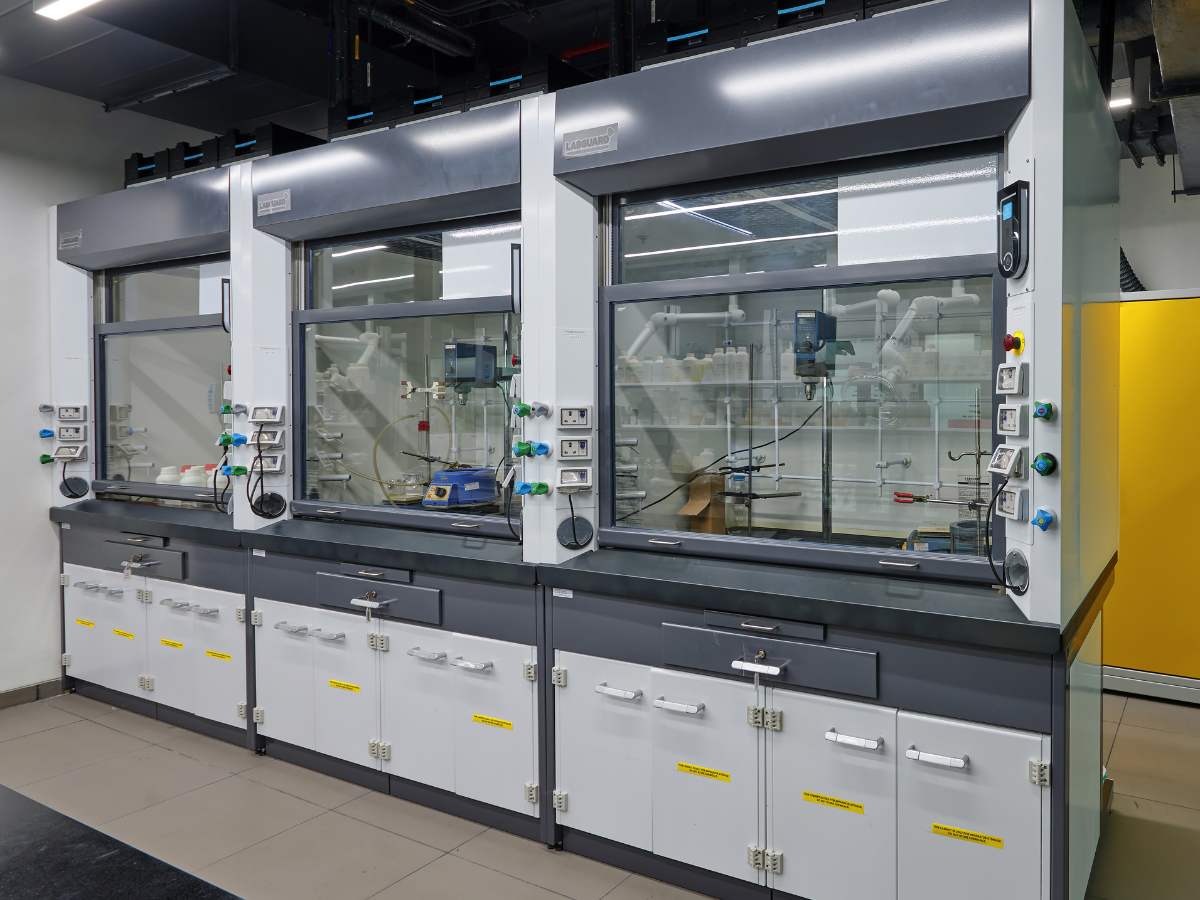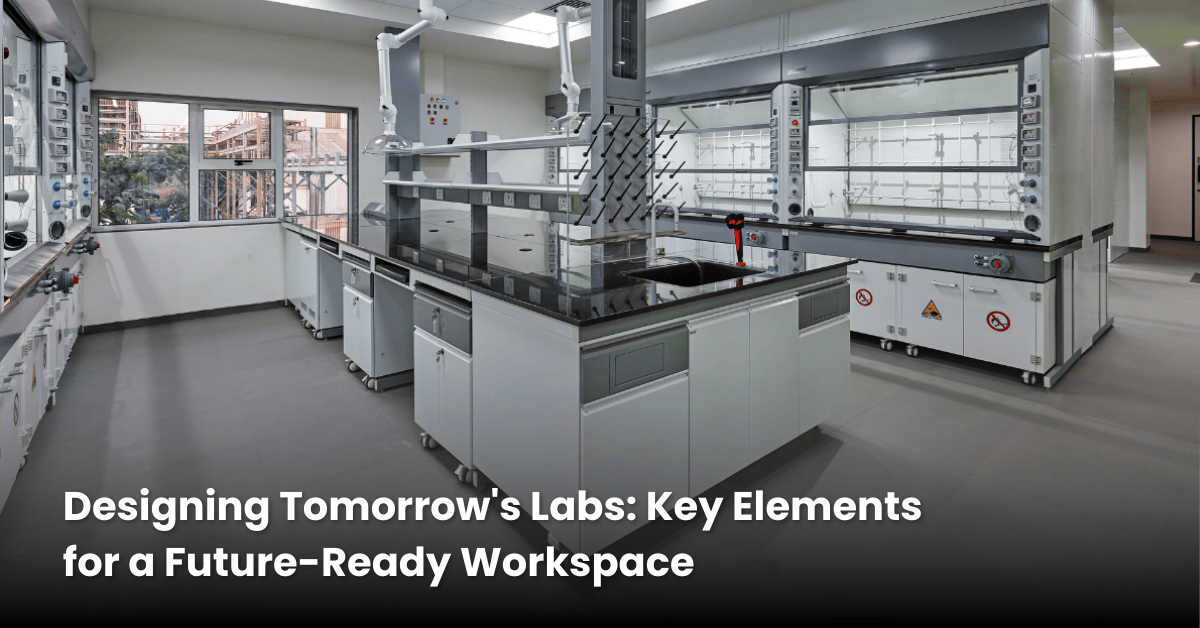As technology advances and research requirements evolve, laboratories must keep pace by adopting future-ready designs. Whether you are building a new lab or upgrading an existing one, designing with the future in mind ensures that your lab remains flexible, scalable, and equipped to handle new challenges.
In this guide, we’ll explore the key elements of a future-ready lab design that can adapt to new technologies, accommodate changing workflows, and meet regulatory standards.
1. Flexibility: Adapting to Change
One of the most important features of a future-ready lab is flexibility. Laboratories are dynamic environments where new equipment, technologies, and processes are introduced regularly. A flexible lab design can adapt to these changes without costly renovations or downtime.
A. Modular Design
Modular furniture and equipment provide labs with the ability to reconfigure spaces as needs change. Modular workbenches, storage units, and shelving allow for easy rearrangement, ensuring that the lab can accommodate new workflows or equipment without major disruptions.
B. Movable Walls and Partitions
Movable walls or partitions can be used to create adaptable spaces within the lab. This is particularly useful in research and development labs where multiple projects are conducted simultaneously, and space needs can vary from one project to the next.
C. Future-Proofing Infrastructure
Design your lab with expandable infrastructure in mind. This includes ensuring that the HVAC system, power supply, and ventilation are designed to support future upgrades or expansions.
2. Integration of Smart Technology
Future-ready labs are increasingly smart labs. Integrating IoT (Internet of Things) devices and smart lab systems can enhance productivity, streamline workflows, and improve safety. Some key technologies include:
A. IoT-Enabled Equipment
Smart sensors can monitor equipment usage, environmental conditions (such as temperature and humidity), and inventory levels. This allows labs to optimize performance and predict when equipment maintenance is required, minimizing downtime.
B. Automation and Robotics
Automated systems and robotics can handle routine, repetitive tasks such as pipetting, mixing, or sample handling. This frees up lab personnel for more complex tasks, improves accuracy, and reduces the risk of human error.
C. Digital Lab Management Systems
Lab management software helps manage workflows, track experiments, and monitor lab resources. Future-ready labs leverage such software to optimize efficiency and make real-time decisions based on data.

3. Sustainability: Designing with the Environment in Mind
Sustainability is a critical component of future-ready labs. By incorporating eco-friendly designs, labs not only reduce their environmental footprint but also save on operational costs.
A. Energy-Efficient Systems
Energy-efficient HVAC systems and LED lighting can significantly reduce energy consumption in the lab. Automated lighting systems that turn off when not in use, as well as efficient ventilation, are key elements of a sustainable design.
B. Sustainable Materials
Use of sustainable, low-emission materials for lab furniture, flooring, and partitions can help create a healthier work environment while adhering to green building standards like LEED or WELL certifications.
C. Water and Waste Management
Future-ready labs incorporate systems for water conservation and waste management. This includes reducing water usage through smart faucets, recycling water for cooling systems, and implementing waste reduction programs for lab materials.
4. Safety and Compliance: Preparing for the Future
No lab design is complete without a focus on safety and regulatory compliance. Future-ready labs must meet current OSHA, ISO, NABL, and other regulatory standards, while also being prepared to accommodate new safety protocols as regulations evolve.
A. Advanced Ventilation and Fume Hoods
Proper ventilation and fume hoods are essential for handling hazardous materials. Future-ready labs should have scalable ventilation systems that can accommodate changes in lab activities without major overhauls.
B. Emergency Preparedness
Install emergency systems such as fire alarms, sprinklers, eye wash stations, and emergency showers in key locations. Ensure that these systems are easy to access and compliant with the latest safety standards.
C. Compliance Monitoring Systems
Use compliance software to monitor safety and regulatory requirements. Future-ready labs benefit from automated systems that track safety protocols and notify personnel when updates or maintenance are needed.
5. Scalability: Planning for Growth
Laboratories must be designed with scalability in mind. As research demands increase, your lab should be able to grow without requiring significant changes to the infrastructure.
A. Expandable Workspaces
Plan for expandable workspaces that can accommodate new team members, equipment, or functions. Modular lab designs allow for the expansion of workstations as the lab grows.
B. Room for Additional Equipment
When planning your lab layout, leave space for additional equipment that may be needed in the future. This prevents the need for frequent reconfigurations or disruptive renovations.
C. IT and Data Infrastructure
With the growing reliance on data, future-ready labs must have robust IT infrastructure. Ensure that your lab has sufficient data storage, network capabilities, and power to support future technologies.
6. Collaboration: Supporting Teamwork and Innovation
Future-ready labs are designed to foster collaboration and innovation. Whether you are working in a research institution, pharmaceutical company, or industrial lab, collaboration between teams and departments is critical for innovation.
A. Open Lab Spaces
Open lab spaces encourage communication and collaboration among team members. By minimizing physical barriers, labs can create a more interactive and innovative working environment.
B. Dedicated Collaboration Areas
Set aside spaces for meetings, brainstorming sessions, and collaborative projects. These spaces should be equipped with technology like interactive screens, video conferencing tools, and smart whiteboards to facilitate teamwork.
C. Cross-Departmental Integration
Design labs with the capability for cross-departmental integration, where different teams can collaborate without major disruptions to workflows. Shared spaces or adjoining labs encourage interaction between different research disciplines
7. Data-Driven Decision Making
In a future-ready lab, data plays a key role in decision-making. Whether it’s tracking equipment usage, optimizing workflows, or ensuring compliance, data-driven decisions improve lab efficiency and output.
A. Data Collection Systems
Install data collection systems to monitor lab processes, equipment performance, and inventory levels. By analyzing data, labs can make informed decisions about optimizing resources and workflows.
B. Cloud Integration
Cloud-based lab management systems enable easy data sharing and remote collaboration. Future-ready labs leverage the cloud to store, analyze, and share data with teams across different locations.
Conclusion: Future-Proofing Your Lab Design
A future-ready lab is one that can adapt to new technologies, regulations, and research requirements while maintaining efficiency and safety. By incorporating flexibility, smart technology, sustainability, and collaboration into your lab design, you create a space that supports innovation and productivity.
SbyD specializes in designing and building future-ready labs. Whether you’re upgrading your current lab or building a new one, our turnkey solutions ensure that your lab is equipped to meet the challenges of tomorrow. Contact us today to learn how we can help you design a future-proof laboratory.

